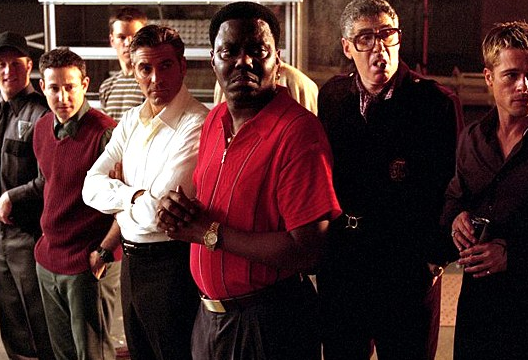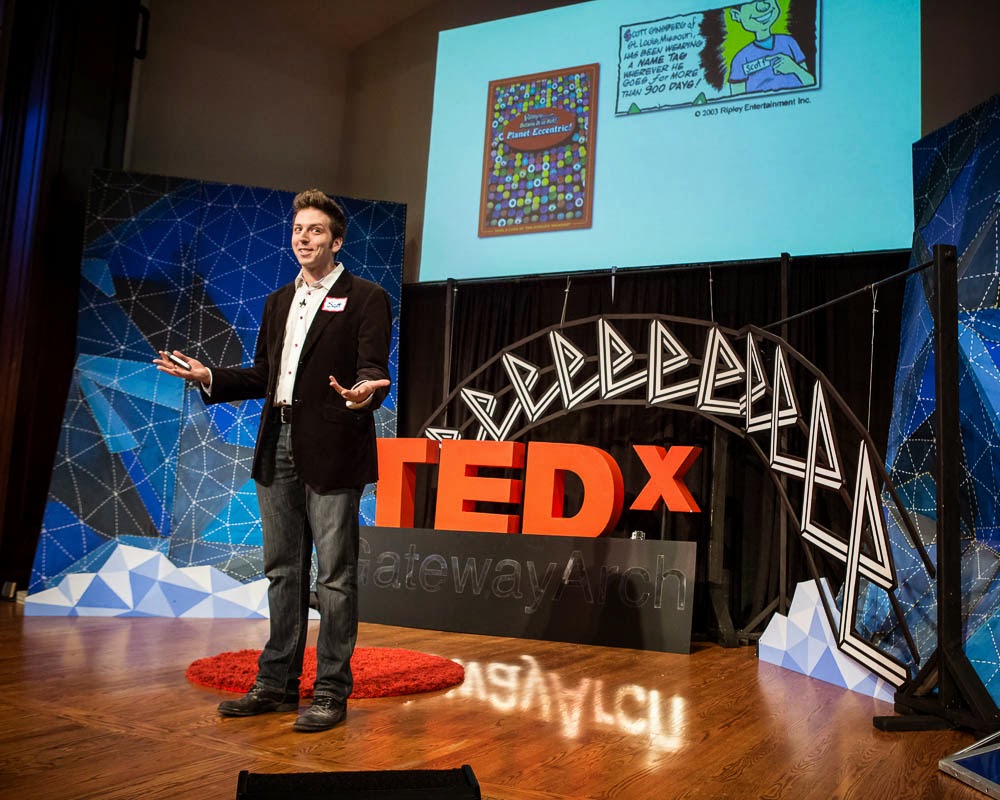

All creativity begins with the moment of conception.
That little piece of kindling that gets the fire going. That initial source of inspiration that takes on a life of its own. That single note from which the entire symphony grows. That single spark of life that signals an idea’s movement value, almost screaming to us, something wants to be built here.
Based on my books in The Prolific Series, I’m going to be deconstructing my favorite moments of conception from popular movies. Each post will contain a video clip from a different film, along with a series of lessons we can learn from the characters.
Today’s clip comes from the planning scene in Ocean’s Eleven:
Give yourself an executional runway. One of my favorite mantras is, ideas are free, only
execution is priceless. It’s an inspiring concept. The fact that we don’t need
an idea, but an I did, is desperately
needed in our procrastinatory society. The challenge of execution, though, is
that it feels overwhelming. Because we still have stars in our eyes. We’re
still operating in blue sky mode. Making the transition from impulse to
initiative, however, requires us to engage our left brains. We have to send our
inner artist out for coffee and enlist his scientist buddy to get down to brass
tacks. In this space, it’s useful to give ourselves a executional runway. A defined area to prepare for takeoff. When I
first concepted the idea for my online video
training portal, I built an
episode template. A production workflow diagram into which I could plug each
piece of content. That way, every time I went into the studio to tape a new
episode, I could just show up and say the words. I could just do my work.
Without that runway, I would have locked myself into a sequence of last minute
decision making processes that were exhaustive and stressful and wasted
valuable energy that should have been dedicating to the primary action. That’s
the secret to execution. The economy of effort. Building a template inventory
for every action so your brain is free to direct its creative energies
exclusively into making each piece of work as great as possible.
Plan your escape.The best part of every heist film isn’t the final crime scene, but the
planning of how to commit it. There’s just something about a bunch of crooks
sitting around a smoky table filled with scale models and architectural
schematics, hashing out technical specs, visualizing every mundane detail of
the robbery, and of course, fantasizing about how to spend their cut once the
job is finished. In this scene, the camera will pan around the table while
every crew member speaks to his role, pausing at the one character who doesn’t
understand his role and will likely compromise the entire operation.
Interestingly enough, this tradition of the planning scene in heist films was
actually invented by a famous criminal namedBaron Lamm. An immigrant discharged from the military for
cheating at cards, he made a living in early twentieth century robbing banks.
Once he was finally apprehended, he was sent to a state prison where he had
time to reflect and adopt what he knew of military tactics and organization to
the business of armed robbery. The result became know as the Baron Lamm
Technique. It’s simple. Scout the location, draw floor plans, locate the
guards, decode the safe, establish the schedule, calculate the hard out exit
time, station the getaway vehicle and map the escape route. Sound familiar?
Remind you of every heist film every made? You’re right. Lamm’s life sentence
was spent teaching every famous criminal in the country how to master the steps
of technique.What kind of
plan do you need to create?
I never had a plan, but I always had a process.I’m not a planner. Not by default, and not by design.
I believe planning has its merits, but in my experience, if I carefully architect
exactly what I’m doing, I can only be as good as that. It’s a classic case of premature cognitive commitment. This is
a term social psychologists use for people become emotionally or intellectually
bound to a course of action. It’s the mindlessness that results after a single
exposure. And so, anytime we assign labels to our ideas too early, it’s a
prejudgment of that idea’s quality and value. If want our creativity to expand
into unexpected territory, we have to keep the process objective for as long as
possible. My favorite basketball player once said, if he didn’t know where he was going, nobody could stop him. That’s good
advice for artists. Because
so many of us spend half our time planning for things we could create if we
didn’t spend half our time planning. In fact, we’re not planning at all, we’re
hiding. Planning is procrastination in disguise. And so, we don’t need a plan,
we need a process. Big difference. A plan is trapped in the what, but a process
is anchored in the how. A plan focused on specialized knowledge, but a process
on a personalized personalized posture. Which
one do you use?
LET ME ASK YA THIS…
What did you learn from this movie clip?
LET ME SUGGEST THIS…
For a copy of the list called, “11 Ways to Out Market the Competition,” send an email to me, and you win the list for free!
* * * *
Scott Ginsberg
That Guy with the Nametag
Author. Speaker. Strategist. Inventor. Filmmaker. Publisher. Songwriter.

Never the same speech twice. Customized for your audience. Impossible to walk away uninspired.
Now booking for 2016-2017.
Email to inquire about fees and availability. Watch clips of The Nametag Guy in action here!
